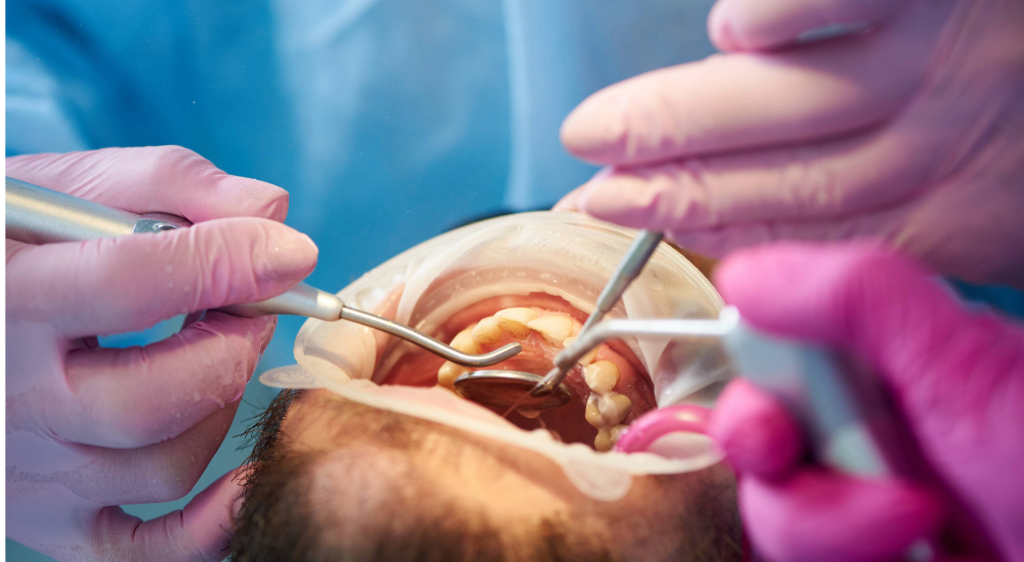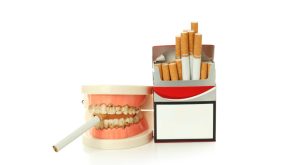Many people use the terms plaque, tartar, and cavities interchangeably, but these are distinct oral health issues that progress from one to another.
Understanding the difference between these conditions is crucial for maintaining optimal dental health and preventing serious complications.
As dental health experts, we’ll break down each condition, explain how they develop, and show you why preventing them at their earliest stages is key to preserving your smile.
Understanding What Plaque Is
Dental plaque is a soft, sticky film that forms on your teeth throughout the day. When you eat, especially foods containing sugars and starches, the bacteria naturally present in your mouth begin to feed on these particles.
As these bacteria process the food debris, they create a biofilm that clings to your teeth’s surfaces, between teeth, and along the gumline.
What makes plaque particularly concerning is:
- It forms continuously, requiring consistent daily removal
- The bacteria in plaque produce acids that attack tooth enamel
- You can feel plaque by running your tongue across your teeth – it has a fuzzy or rough texture
- Plaque appears as a whitish or pale yellow coating on teeth
- Without proper removal, it begins hardening into tartar within 24-72 hours
The Good News About Plaque
Unlike its harder cousin tartar, plaque can be effectively removed through proper daily oral hygiene.
Regular brushing twice a day with a high-quality toothpaste like TartarEnd®, especially when paired with a sonic toothbrush, helps break up and remove plaque before it can cause damage.
Daily flossing is equally important, as it removes plaque from spaces between teeth that your toothbrush can’t reach.
Tartar, When Plaque Hardens Into a Bigger Problem
When plaque isn’t properly removed, it undergoes a transformation that creates a much more stubborn dental issue, tartar.
Also known as dental calculus, tartar forms when minerals from your saliva combine with plaque, creating a hard, cement-like substance that bonds firmly to your teeth’s enamel.
What you need to know about Tartar:
- Unlike plaque, tartar appears as a yellowish or brownish deposit on teeth
- It commonly forms along the gumline and between teeth
- Once established, tartar creates a rough surface that makes it easier for new plaque to attach
- It can extend below the gum line, leading to gum inflammation and periodontal disease
- Standard brushing and flossing cannot remove tartar once it forms
The Professional Solution
While plaque can be managed at home, tartar requires professional intervention. However, specialized products like TartarEnd® toothpaste are designed to help dissolve existing tartar deposits and prevent new formation.
When used with a sonic toothbrush, this innovative formula works both above and below the gumline to tackle tartar buildup effectively.
Prevention Is Better Than Cure
The best defense against tartar is preventing plaque from hardening in the first place. This means maintaining consistent oral hygiene habits and using products specifically formulated to prevent tartar formation.
Regular use of TartarEnd® has been shown to significantly reduce tartar buildup and help maintain healthier gums.
Cavities, The Destructive Result
When plaque and tartar are left unchecked, they create the perfect conditions for cavities to develop. Cavities, also known as dental caries or tooth decay, represent actual damage to your tooth’s structure, holes that form in your teeth on a hard surface.
The Cavity Formation Process
The same bacteria that form plaque continue to produce acids that gradually eat away at your tooth enamel.
As tartar shields these bacteria, they can continue their destructive process uninterrupted. Over time, these acids create tiny holes in your enamel that gradually expand deeper into the tooth structure.
Warning signs of cavities:
- Tooth sensitivity, especially to hot, cold, or sweet items
- Visible holes or pits in your teeth
- Dark spots or discoloration on tooth surfaces
- Pain when biting down
- Toothache without an obvious cause
Breaking The Chain of Dental Problems
Understanding the progression from plaque to tartar to cavities helps highlight why early prevention is crucial.
By maintaining proper oral hygiene and using advanced products like TartarEnd®, you can stop this destructive cycle before it leads to cavities and costly dental procedures.
Prevention and Treatment
The best way to prevent cavities is to address dental issues at their source, plaque and tartar.
TartarEnd®’s unique formula, when used regularly with a sonic toothbrush, helps prevent the buildup of both plaque and tartar, significantly reducing your risk of developing cavities.




